You are about to pressure test your newly installed PVC lines. You close the valve, but a nagging thought appears: can the valve handle the intense pressure, or will it crack and flood the job site?
No, a standard pressure test will not damage a quality PVC ball valve. These valves are specifically designed to hold pressure against a closed ball. However, you must avoid sudden pressure surges like water hammer and follow correct procedures.
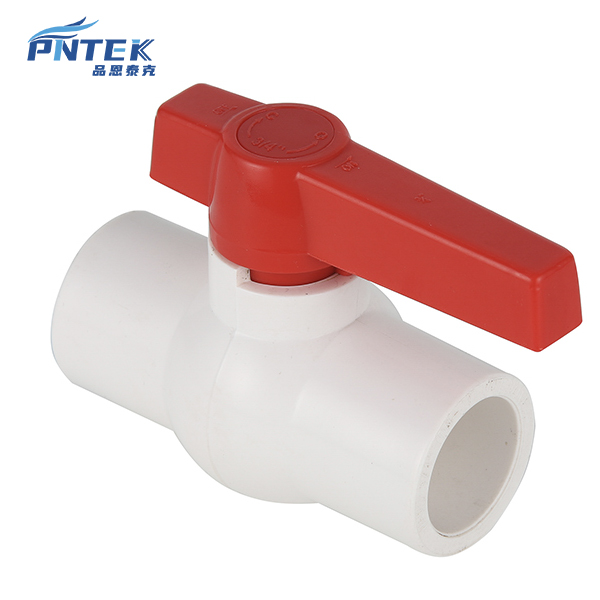
This is a very common concern, and it’s something I often clarify for my partners, including Budi’s team in Indonesia. Their customers need complete confidence that our valves will perform under the stress of a system test. When a valve successfully holds pressure, it proves the quality of both the valve and the installation. A proper test is the final seal of approval on a job well done. Understanding how to do it safely is crucial for preventing accidents and ensuring the long-term reliability of the entire plumbing system.
Can you pressure test against a ball valve?
You need to isolate a section of pipe for testing. Closing the ball valve seems logical, but you’re worried the force might compromise the seals or even crack the valve body itself.
Yes, you can and should pressure test against a closed ball valve. Its design makes it ideal for isolation. The pressure actually helps by pushing the ball more firmly into the downstream seat, improving the seal.
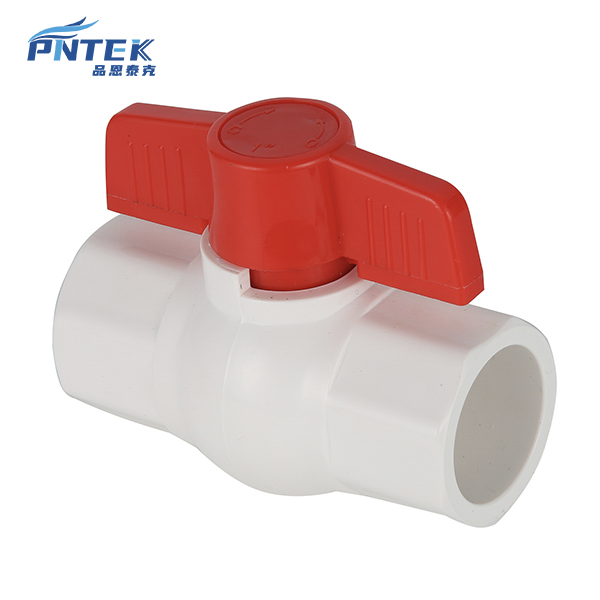
This is one of the main advantages of a ball valve’s design. Let’s look at what happens inside. When you close the valve and apply pressure from the upstream side, that force pushes the entire floating ball into the downstream PTFE (Teflon) seat. This force compresses the seat, creating an exceptionally tight seal. The valve is literally using the test pressure to seal itself more effectively. This is why a ball valve is superior to other designs, like gate valves, for this purpose. A gate valve can be damaged if it is closed and subjected to high pressure. For a successful test, you only need to follow two simple rules: First, ensure the handle is turned a full 90 degrees to the fully closed position. A partially open valve will fail the test. Second, introduce the test pressure (whether it’s air or water) into the system slowly and gradually to prevent any sudden shock.
Can you pressure test PVC pipe?
Your new PVC system is fully glued and assembled. It looks perfect, but a tiny, hidden leak in one joint could cause major damage later. You need a way to be 100% sure.
Absolutely. Pressure testing a newly installed PVC pipe system is a non-negotiable step for any professional plumber. This test verifies the integrity of every single solvent-welded joint and threaded connection before they are covered up.
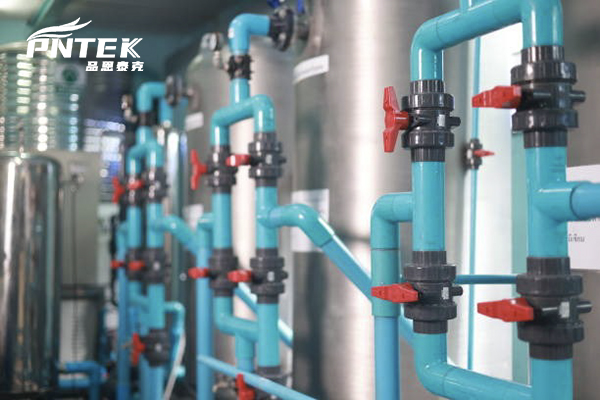
This is a critical quality control procedure. Finding a leak before the walls are closed or the trenches are backfilled is easy to fix. Finding it afterward is a disaster. There are two main methods for testing PVC pipes: hydrostatic (water) and pneumatic (air).
| Test Method | Advantages | Disadvantages |
|---|---|---|
| Water (Hydrostatic) | Safer, as water does not compress and stores less energy. Leaks are often easy to see. | Can be messy. Requires a water source and a way to drain the system afterward. |
| Air (Pneumatic) | Cleaner. Can sometimes find very small leaks that water might not reveal right away. | More dangerous. Compressed air stores a lot of energy; a failure can be explosive. |
Regardless of the method, the most important rule is to wait for the solvent cement to fully cure. This typically takes 24 hours, but you should always check the cement manufacturer’s instructions. Pressurizing the system too early will blow out the joints. The test pressure should be about 1.5 times the system’s working pressure, but never exceed the pressure rating of the lowest-rated component in the system.
Can a PVC check valve go bad?
Your sump pump runs, but the water level doesn’t drop. Or maybe the pump cycles on and off constantly. You suspect a problem, and the invisible check valve is a likely culprit.
Yes, a PVC check valve can fail. Since it is a mechanical device with moving parts, it can get stuck due to debris, its seals can wear out, or its spring can break, leading to backflow.
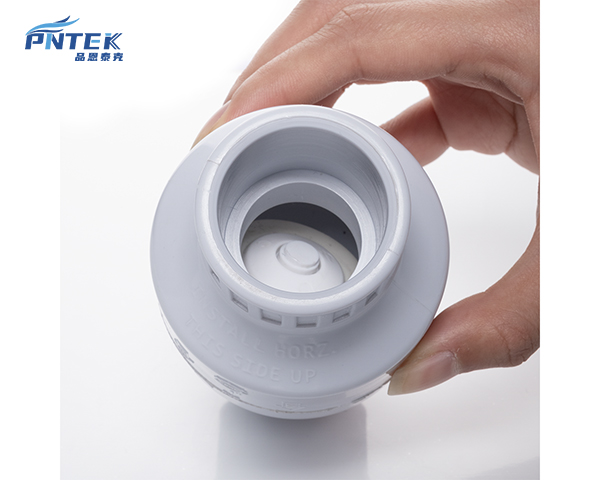
Check valves are the unsung heroes of many plumbing systems, but they are not immortal. Their job is to allow flow in only one direction. When they fail, it almost always leads to a problem. The most common cause of failure is debris. A small rock, leaf, or piece of plastic can get lodged in the valve, preventing the flapper or ball from seating properly. This holds the valve partially open, allowing water to flow backward. Another cause is simple wear and tear. Over thousands of cycles, the seal that the flapper or ball closes against can become worn, creating a small, persistent leak. In a spring-assisted check valve, a metal spring can corrode over time, especially in harsh water, eventually losing tension or breaking completely. This is why it is important to install check valves in an accessible location for inspection and eventual replacement. They are a maintenance item, not a permanent fixture.
How much pressure can a PVC ball valve handle?
You’re specifying valves for a project and see “150 PSI” on the side. You need to know if that’s enough for your application, or if you need a heavy-duty option.
Standard PVC ball valves are typically rated for 150 PSI of non-shock water pressure at 73°F (23°C). This pressure rating decreases significantly as the temperature of the fluid passing through the valve increases.
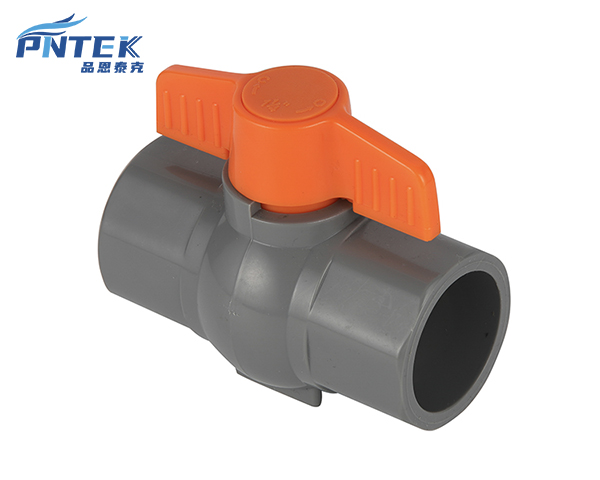
That temperature detail is the most critical part of understanding the pressure rating. PVC plastic becomes softer and more flexible as it gets hotter. As it softens, its ability to withstand pressure is reduced. This is a fundamental principle of thermoplastic piping systems that I always emphasize with Budi and his team. They must guide their customers to consider the operating temperature of their system, not just the pressure.
Here is a general guide for how temperature affects a PVC valve’s pressure rating:
| Fluid Temperature | Approximate Max Pressure Rating |
|---|---|
| 73°F (23°C) | 150 PSI (100%) |
| 100°F (38°C) | 110 PSI (~73%) |
| 120°F (49°C) | 75 PSI (50%) |
| 140°F (60°C) | 50 PSI (~33%) |
The term “non-shock” is also important. This means the rating applies to steady, constant pressure. It does not account for water hammer, which is a sudden pressure spike caused by a valve closing too quickly. This spike can easily exceed 150 PSI and damage the system. Always operate valves slowly to prevent this.
Conclusion
Pressure testing will not damage a quality PVC ball valve if done correctly. Always pressurize slowly, stay within the valve’s pressure and temperature limits, and let solvent cement fully cure.
Post time: Sep-08-2025




